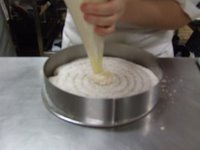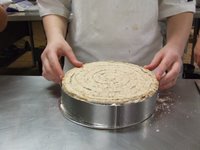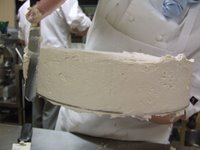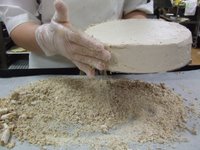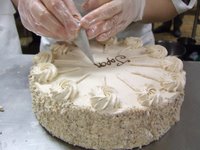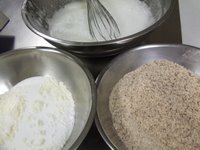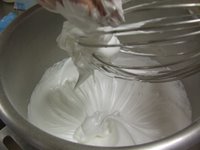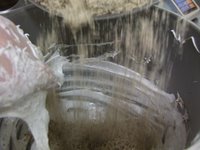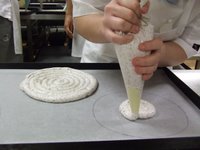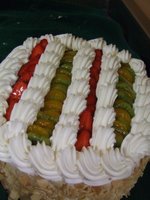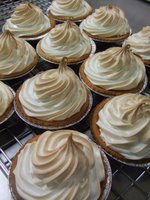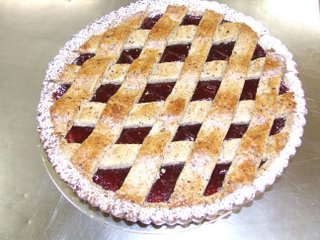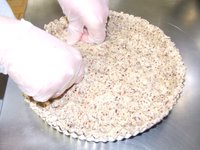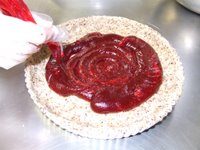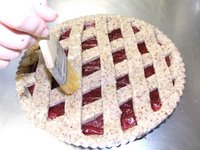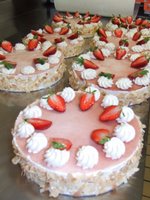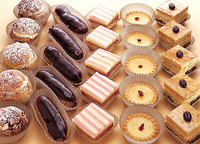
This week we made petit fours, the term literally means "small ovens" in French, centuries ago little cakes were baked in the oven after the large ones when the brick ovens had cooled down. Now days this term refers to a variety of not only cakes but cookies, pastries, mazipan fruit and chocolates served with coffee, tea or a glass of wine.
As we discussed in class there are several different types:
Petit Four Glace is the most common type, usually consisting for various small iced cakes cut into shapes such as diamonds, rounds, ovals, triangles or even hearts. The square petit fours are the most common as there is very little wastage. A poured fondant is the traditional glaze but nowdays a ganche or poured icing is also used. When set delicate decorations or piping is placed on top.
Petit Four Sec refers to the delicate cookies, sometimes sandwhiched together with preserves, ganache or praline.
Petit Four Frais are miniture pastries like mini eclairs, lemon or fruit tarts and marzipan coloured, flavoured and moulded into mini fruits.
More information can be found on the following site:
http://en.wikipedia.org/wiki/Petit_fours
The important points of this weeks lesson relate to the preparation and use of the fondant for our petit four glace. these points include:
- The fondant needs to be used within the temperature range of 37-40 degrees celcius.
- Adjust the fondant with a sugar syrup (stock syrup) to get the required consistency for dipping or coating, it should coat the cake with a thickness of 1-2mm without running off.
- Each of the different shapes of cake should have a different flavour/colour.
- The recommended colour progression should be white, yellow, orange, pink, coffee and brown. These colours are complimentry on the trays when the products are served, avoid using blue and green.
Check out these petit four glace, remember we discussed in class the possible retail prices, something for you to think about, possible market niches include weddings, christenings and restaurants.
http://www.dragonflycakes.com/products.php?cat=5


